Haiku: a short introduction (with cartoons)
What's a haiku?
A haiku is a short poem from Japan that describes, in only three lines, "what's happening at a certain time, in a certain place" (Basho). It contains a word related to the season, and uses two images to give the reader a sense of wonder or aha! moment.
Should I count syllables?
Most traditional Japanese haiku were written in 17 on (sound units), but when you write haiku in English you don't have to count syllables.
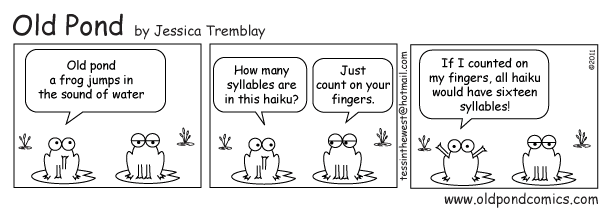
Instead, you should try to write your haiku following a "short-long-short" pattern, meaning: the first line is short, the second line is longer, and the third line is short. Example:
line 1 is short
line 2 is much longer
line 3 is short
One breath poetry
Haiku is often called "one breath poetry" because the whole poem is so short that it can be said in one breath.
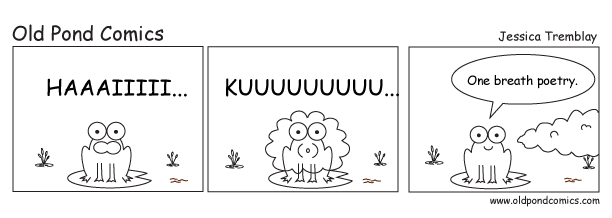
Season word (kigo)
Most haiku will contain a word indicating the season. This "season word" is called a kigo. This doesn't mean you have to name the season as in "autumn evening" or "summer rain". Certain words will evocke a particular season.
For example, the word "pumpkin" implies the haiku is taking place in autumn, "snowflakes" means it's winter. Don't use more than one kigo per haiku. One is enough.
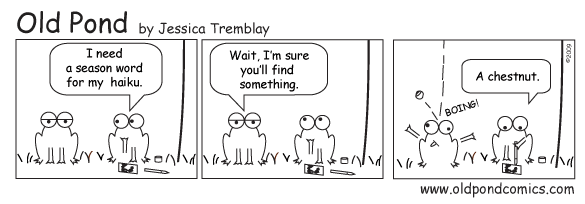
Two images
A good haiku will feature two images. In English, that pause between the two images will be marked by a hyphen, and sometimes an ellipsis . . . But most of the time, the pause is a natural pause at the end of the line and you don’t need to add any punctuation.
When choosing your two images, the two techniques more frequently used are: comparison, contrast, association.
An element of surprise
The juxtaposition of two images are the key to creating an element of surprise -- the aha! moment -- that is the essence of haiku. A good haiku helps us see the world in a different view.
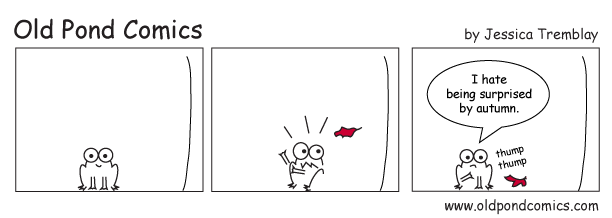
Go for a haiku walk
Haiku poets always carry a small notebook in their pocket when they go on a ginko (a walk done in search of inspiration to write a haiku).
During a ginko walk, observe what is happening around you. Use all your senses. Write down everything that you see, hear, touch, taste, smell. Anything that catches your attention.
Sometimes, a haiku will come to you already finished, in three lines, with two images. Sometimes, you’ll have a list of images, but no haiku yet. When you re-read these notes after your walk, maybe you’ll find a second image that will complete the haiku.
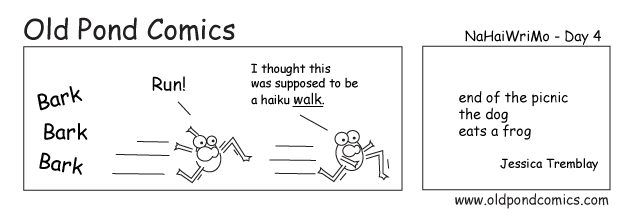
Next Chapter: Write a Haiku>
